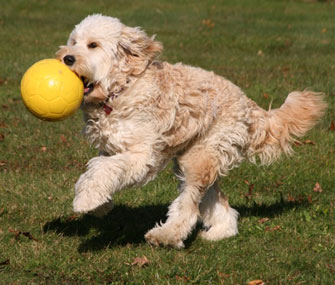How to Take Great Photos of Your Dog
Published on May 30, 2013

We think of our dogs as part of the family, so it’s no surprise that we want them in the family photos. But getting a good picture of your dog can be even harder than getting a good shot of your toddler. Just as there are simple strategies you can use to photograph kids, there are some easy tricks of the trade that can help you get better photos of your dog.
Start with the right equipment: You will get the best shots if you use a camera with a fast shutter speed. Investing in a reasonably priced DSLR camera will make a major difference in the quality of your pictures.
Five Tips for Better Photos
1. Get your dog used to the camera. Mary Bloom, staff photographer for the Westminster Kennel Club, has found many dogs are wary of the sounds made by the camera. To get your dog comfortable with the camera and its noises, point the lens away from your dog and click the shutter. Every time your camera makes a noise, treat your dog. The pairing of the camera noise with a reward will make your dog more likely to let you take his photo.
2. Be mindful of lighting and background. If possible, Bloom suggests, photograph your dog in natural light or, if you are indoors, with ample lamplight. A flash can cause "green eye” and can be frightening to your dog. If you need to use a flash, opt for one that can be pointed up toward the ceiling rather than straight at your dog. Avoid outdoor shadows by shooting photos early in the day or late in the afternoon, when the sun is lower in the sky, or by shooting on a cloudy day. If you’re shooting in direct sunlight, find a shady spot, like under a tree.

3. Get down at your dog’s level. Rather than forcing your dog to look up at the camera, Bloom recommends that you put your camera at the same height as your dog’s face. This may mean getting down on your knees or lying on the floor, or persuading your dog to sit on a piece of furniture. When you are down at his level, your dog may want to investigate the camera; enlist a helper to hold onto his leash if needed.
4. Keep your dog in focus. For the best photos of your dog’s face, make his eyes the main focus. Brachycephalic dogs, or dogs with flatter faces, like Pugs, are photographed best with the dog looking directly at the camera, while longer-snouted dogs photograph better from the side. If your dog has special features, like a curly tail or long ears, play these up and make them a focus of the photo.
5. Let your dog be himself. Rather than placing your dog in an uncomfortable stay and forcing him to look directly at the camera, Bloom recommends that you photograph him doing what he naturally does. Photographing the things your dog does on a daily basis — chewing on a favorite toy, lounging on the sofa, looking out the window — can become an opportunity to capture his unique personality, just like you would do with any other member of the family.
Read other Vetstreet articles about animals and photography:
5 Ways to Take Great Photos of Your Cat
A Rescue Boosts Adoptions With Help From a Photographer
Tips for Capturing an Unforgettable Portrait of Your Pet
Shelter Photographer Talks About Her Hilarious Series of Dog Blooper Snapshots





